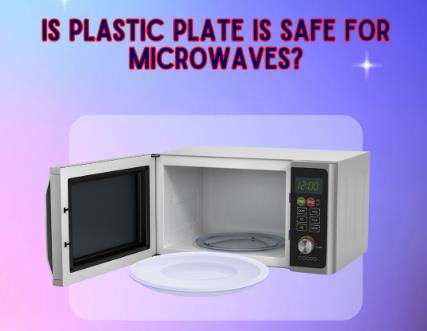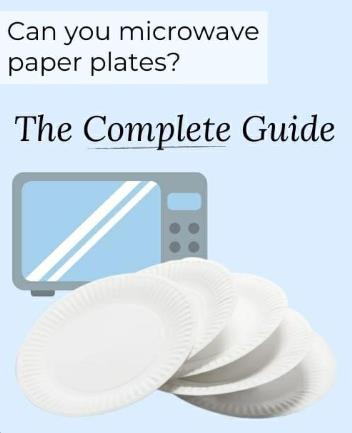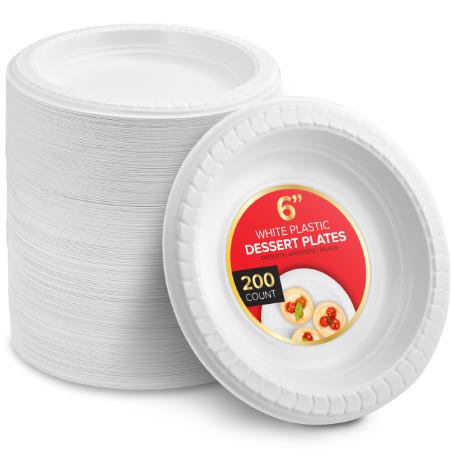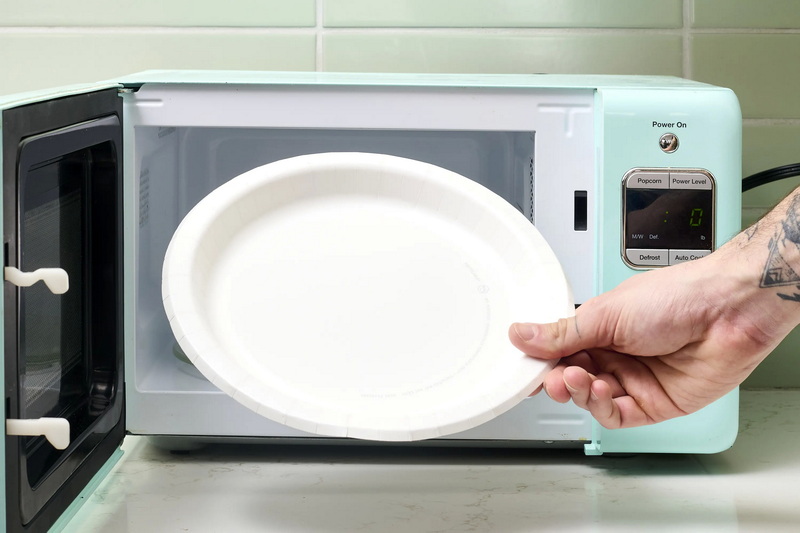
Content Menu
● Understanding Plastic Plates
● Identifying Microwave-Safe Plates
● Risks of Microwaving Non-Safe Plastics
● Testing Your Plastic Plates
● Alternatives to Plastic Disposable Plates
● The Science Behind Microwave Safety
>> Chemical Migration
>> The Role of Temperature
● Health Implications of Microwaving Plastics
>> Regulatory Standards
● Practical Tips for Using Plastic Plates in Microwaves
● The Future of Disposable Dinnerware
● Conclusion
● FAQ
>> 1. Are all plastic disposable plates safe to use in the microwave?
>> 2. What happens if I microwave a non-microwave-safe plate?
>> 3. Can I use paper plates in the microwave?
>> 4. How can I test if my plastic plate is microwave safe?
>> 5. What materials should I avoid microwaving?
● Citations:
In today's fast-paced world, convenience often takes precedence, especially when it comes to food preparation. Disposable plates, particularly plastic ones, have become a staple in many households for their ease of use and cleanup. However, a common question arises: Can plastic disposable plates be microwaved? This article explores the safety of microwaving plastic disposable plates, the materials involved, and guidelines for safe usage.

Understanding Plastic Plates
Plastic plates are made from various types of plastic, each with distinct properties and safety concerns. The most common plastics used in disposable plates include:
- Polypropylene (PP): Often labeled with a recycling code of #5, this material is generally considered microwave-safe.
- Polystyrene (PS): Commonly used for foam plates, this type is not recommended for microwave use as it can melt and release harmful chemicals.
- Polyethylene (PE): Typically used in lower-quality disposable plates, it is not suitable for high temperatures.
Understanding these materials is crucial in determining whether a specific plate can safely be used in the microwave.
Identifying Microwave-Safe Plates
To ascertain if a plastic disposable plate is microwave-safe, look for specific indicators:
- Labeling: Check the bottom of the plate for a "microwave-safe" label or a symbol with wavy lines. This indicates that the plate has been tested for microwave use.
- Recycling Codes: Plates marked with a recycling code of #5 (polypropylene) are generally safe for microwaving. Codes #1 (PETE), #3 (PVC), and #6 (PS) are not safe.
- Manufacturer Instructions: Always refer to the packaging or manufacturer's guidelines for specific instructions regarding microwave safety.
Risks of Microwaving Non-Safe Plastics
Using non-microwave-safe plastics can lead to several risks:
- Melting: Non-microwave-safe plastics may melt in the microwave, potentially ruining your food and creating a mess.
- Chemical Leaching: Some plastics can leach harmful chemicals into food when heated. For instance, bisphenol A (BPA) and phthalates are common concerns associated with certain plastics. Research indicates that while BPA levels in food are generally low, the risk increases with heat exposure from microwaving non-safe plastics.
Testing Your Plastic Plates
If you are unsure about the safety of your plastic disposable plates, you can conduct a simple test:
1. Place a cup of water in the microwave alongside the plastic plate.
2. Heat both items on high for one minute.
3. After one minute, carefully check if the plate is warm or hot. If it is significantly warmer than the cup of water, it may not be safe for microwaving.

Alternatives to Plastic Disposable Plates
For those concerned about the safety of microwaving plastic plates, consider these alternatives:
- Glass Plates: These are generally safe for microwaving and do not leach chemicals.
- Ceramic Plates: Ensure they are labeled as microwave-safe to avoid cracking or breaking.
- Microwave-Safe Paper Plates: Some paper plates are designed to withstand microwave heat; however, ensure they do not contain plastic coatings.
The Science Behind Microwave Safety
Understanding how microwaves interact with different materials helps clarify why some plastics are safe while others are not. Microwaves heat food by agitating water molecules within it. This process generates heat that cooks food but can also affect the integrity of certain plastics.
Chemical Migration
When plastics are heated, especially those not designed for such use, they can release chemicals into food. Studies have shown that heating certain plastics can increase the rate at which harmful substances like BPA migrate into food. This is particularly concerning with single-use plastics that were not intended for high-temperature applications.
The Role of Temperature
Each type of plastic has a specific melting point and temperature tolerance. For example:
- Polypropylene (#5) can typically withstand temperatures up to 230°F (110°C), making it suitable for most microwave applications.
- Polystyrene (#6), on the other hand, has a much lower melting point and can begin to deform at temperatures as low as 160°F (71°C).
Understanding these temperature thresholds is crucial when selecting disposable plates for microwave use.
Health Implications of Microwaving Plastics
The health implications associated with microwaving certain plastics cannot be overstated. Chemicals like BPA and phthalates have been linked to various health issues:
- Hormonal Disruption: These chemicals can mimic hormones in the body, leading to potential reproductive issues and developmental problems in children.
- Increased Cancer Risk: Some studies suggest that long-term exposure to certain plastic additives may increase cancer risk due to their endocrine-disrupting properties.
Regulatory Standards
The U.S. Food and Drug Administration (FDA) regulates materials intended for food contact, including plastics used in disposable dinnerware. However, not all manufacturers adhere to these standards strictly. It is essential to choose products from reputable brands that clearly label their items as microwave-safe.

Practical Tips for Using Plastic Plates in Microwaves
If you decide to use plastic disposable plates in your microwave, here are some practical tips to ensure safety:
- Always Check Labels: Before using any plastic plate in the microwave, always check for a "microwave-safe" label or symbol.
- Avoid High-Fat Foods: Foods high in fat can reach higher temperatures than other foods and may cause unsafe melting or leaching from plastic containers.
- Use Short Intervals: Heat food in shorter intervals and check frequently to prevent overheating any plastic container.
- Avoid Overheating: If you notice any warping or melting during heating, stop immediately and discard the plate.
The Future of Disposable Dinnerware
As awareness about health risks associated with certain plastics grows, manufacturers are beginning to innovate more sustainable options. Biodegradable and compostable materials are becoming increasingly popular as alternatives to traditional plastics:
- Bamboo Plates: Made from sustainable bamboo fibers, these plates offer an eco-friendly alternative that is often microwave-safe.
- Bagasse Plates: Made from sugarcane pulp, bagasse plates are compostable and can often withstand heat better than traditional paper or foam options.
These alternatives provide environmentally friendly options without compromising safety during heating processes like microwaving.
Conclusion
In summary, while some plastic disposable plates can be safely microwaved if they are labeled as such or made from polypropylene (#5), caution is essential. Always check labels and avoid using non-microwave-safe plastics to prevent melting and chemical leaching into your food. When in doubt, opt for glass or ceramic alternatives that provide peace of mind during meal preparation. As consumers become more conscious of health risks associated with certain plastics, exploring biodegradable options may also be worthwhile for future gatherings and meals.

FAQ
1. Are all plastic disposable plates safe to use in the microwave?
Not all plastic plates are safe. Look for "microwave-safe" labeling or check for recycling code #5 (polypropylene) to ensure safety.
2. What happens if I microwave a non-microwave-safe plate?
Microwaving a non-safe plate can lead to melting or warping and may cause harmful chemicals to leach into your food.
3. Can I use paper plates in the microwave?
Some paper plates are microwave-safe; however, ensure they do not have plastic coatings or metallic elements before microwaving.
4. How can I test if my plastic plate is microwave safe?
Place a cup of water in the microwave with your plate; if the plate becomes significantly warmer than the water after heating, it is likely not safe.
5. What materials should I avoid microwaving?
Avoid microwaving plates made from polystyrene (#6), polyvinyl chloride (#3), and any single-use plastics that do not have clear labeling indicating they are microwave-safe.
Citations:
[1] https://smartyhadaparty.com/blogs/home/how-to-tell-if-a-plastic-plate-is-safe-for-microwaves
[2] https://onlyonestopshop.com/blogs/news/is-plastic-plate-is-safe-for-microwaves
[3] https://www.selectsettings.com/blogs/tips-for-planning-the-ultimate-party/how-to-tell-if-your-disposable-plates-are-microwave-safe
[4] https://www.chemicalsafetyfacts.org/health-and-safety/is-it-safe-to-microwave-plastic-answering-common-safety-questions-about-plastics-food-packaging/
[5] https://www.restaurantware.com/blogs/food-presentation/disposable-dinner-plate-buying-guide
[6] https://www.beyondplastics.org/fact-sheets/stop-microwaving-plastic
[7] https://www.foodnetwork.com/healthyeats/healthy-tips/2019/02/what-to-know-about-using-plastic-in-the-microwave
[8] https://www.anchenggy.com/blog/microwaving-disposable-plates.html
[9] https://www.healthline.com/nutrition/can-you-microwave-plastic


















